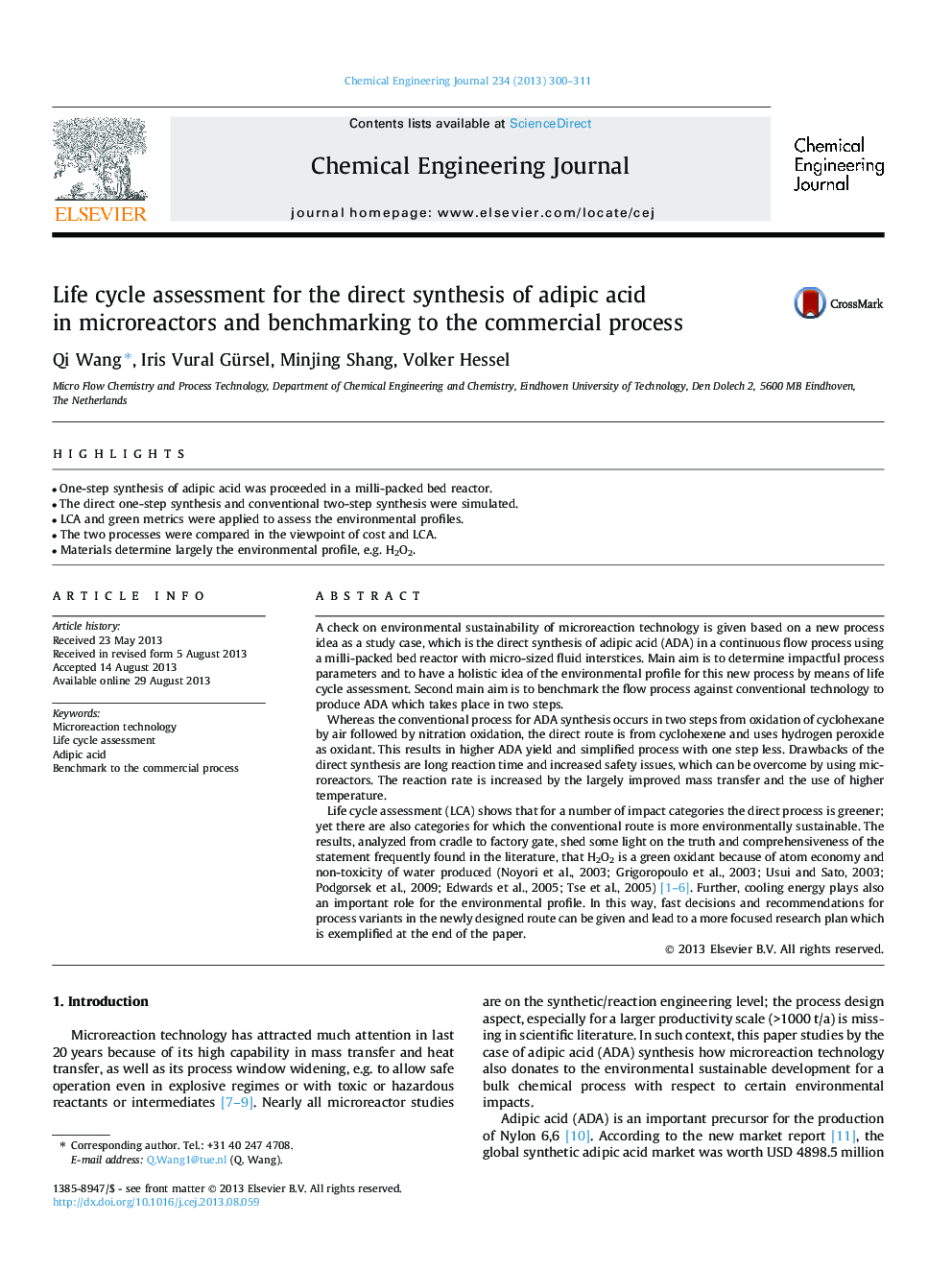| Article ID | Journal | Published Year | Pages | File Type |
|---|---|---|---|---|
| 148107 | Chemical Engineering Journal | 2013 | 12 Pages |
•One-step synthesis of adipic acid was proceeded in a milli-packed bed reactor.•The direct one-step synthesis and conventional two-step synthesis were simulated.•LCA and green metrics were applied to assess the environmental profiles.•The two processes were compared in the viewpoint of cost and LCA.•Materials determine largely the environmental profile, e.g. H2O2.
A check on environmental sustainability of microreaction technology is given based on a new process idea as a study case, which is the direct synthesis of adipic acid (ADA) in a continuous flow process using a milli-packed bed reactor with micro-sized fluid interstices. Main aim is to determine impactful process parameters and to have a holistic idea of the environmental profile for this new process by means of life cycle assessment. Second main aim is to benchmark the flow process against conventional technology to produce ADA which takes place in two steps.Whereas the conventional process for ADA synthesis occurs in two steps from oxidation of cyclohexane by air followed by nitration oxidation, the direct route is from cyclohexene and uses hydrogen peroxide as oxidant. This results in higher ADA yield and simplified process with one step less. Drawbacks of the direct synthesis are long reaction time and increased safety issues, which can be overcome by using microreactors. The reaction rate is increased by the largely improved mass transfer and the use of higher temperature.Life cycle assessment (LCA) shows that for a number of impact categories the direct process is greener; yet there are also categories for which the conventional route is more environmentally sustainable. The results, analyzed from cradle to factory gate, shed some light on the truth and comprehensiveness of the statement frequently found in the literature, that H2O2 is a green oxidant because of atom economy and non-toxicity of water produced (Noyori et al., 2003; Grigoropoulo et al., 2003; Usui and Sato, 2003; Podgorsek et al., 2009; Edwards et al., 2005; Tse et al., 2005) [1], [2], [3], [4], [5] and [6]. Further, cooling energy plays also an important role for the environmental profile. In this way, fast decisions and recommendations for process variants in the newly designed route can be given and lead to a more focused research plan which is exemplified at the end of the paper.
